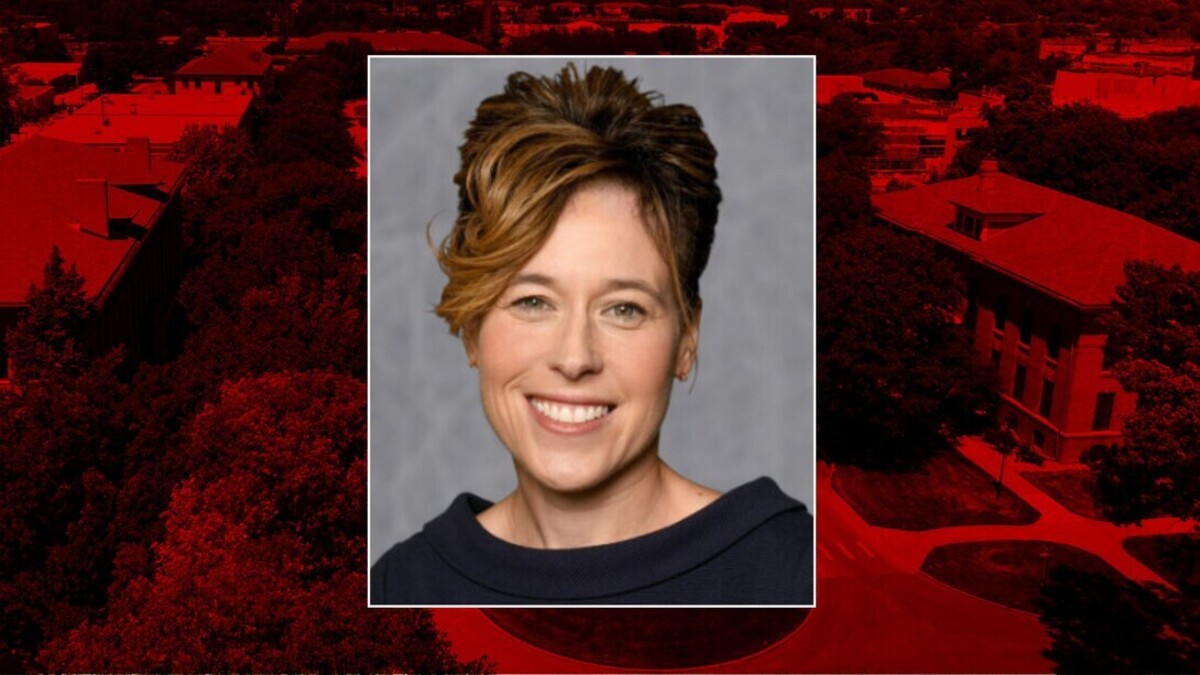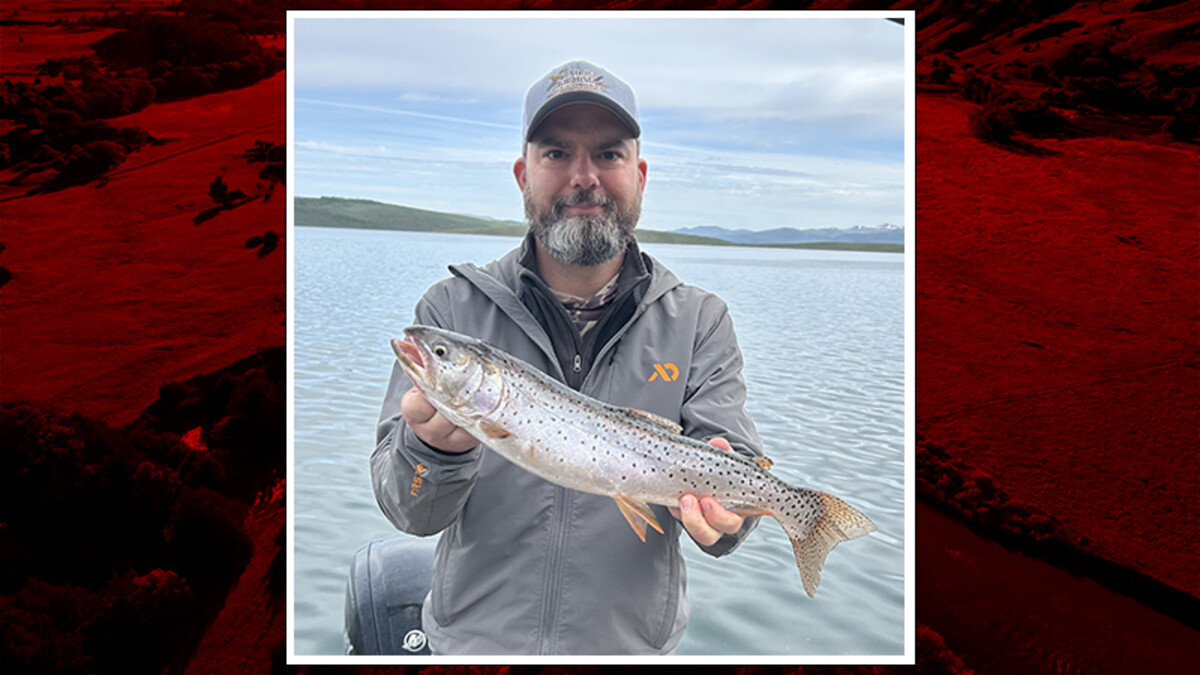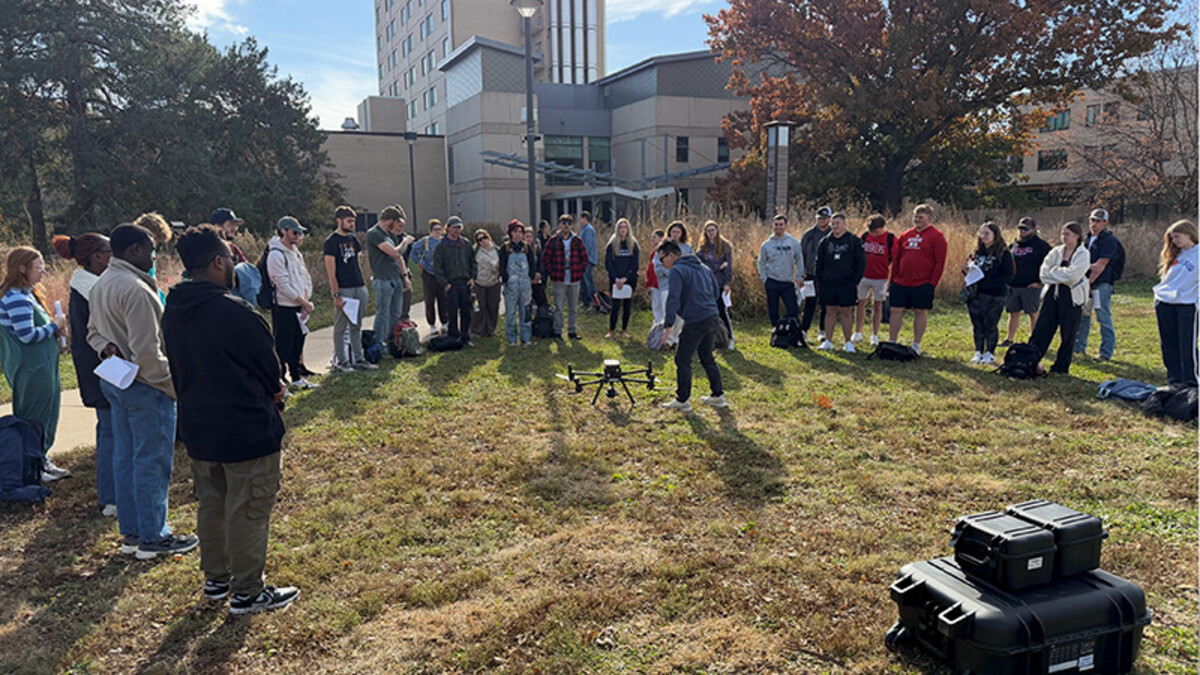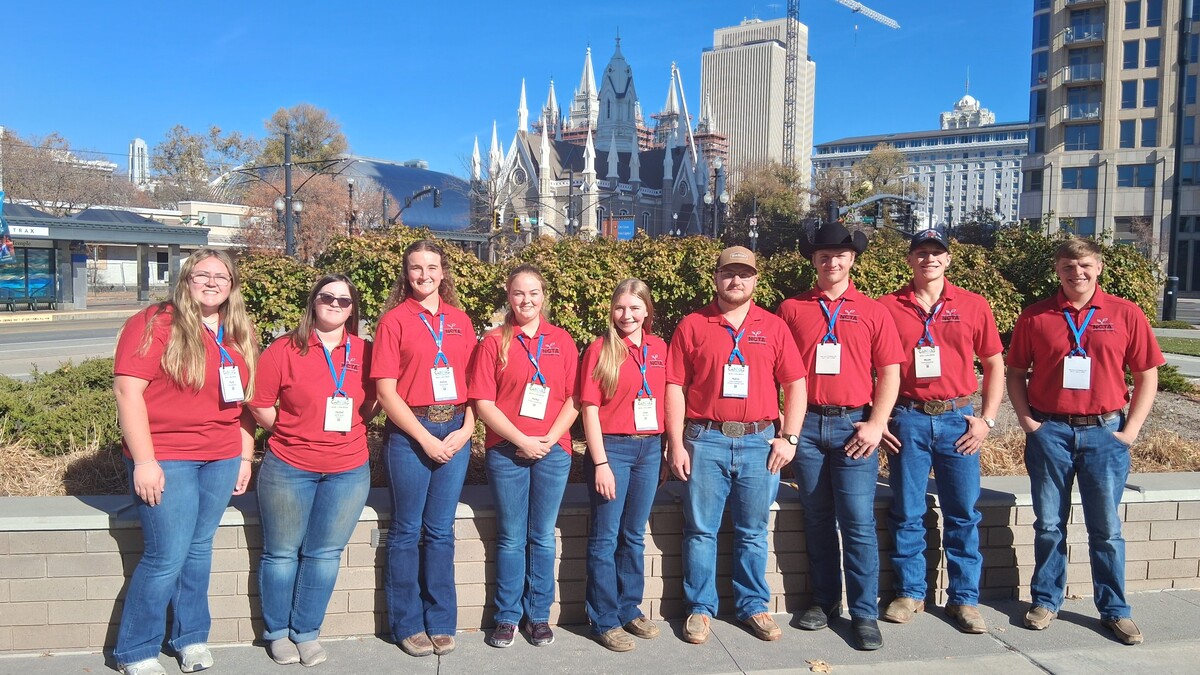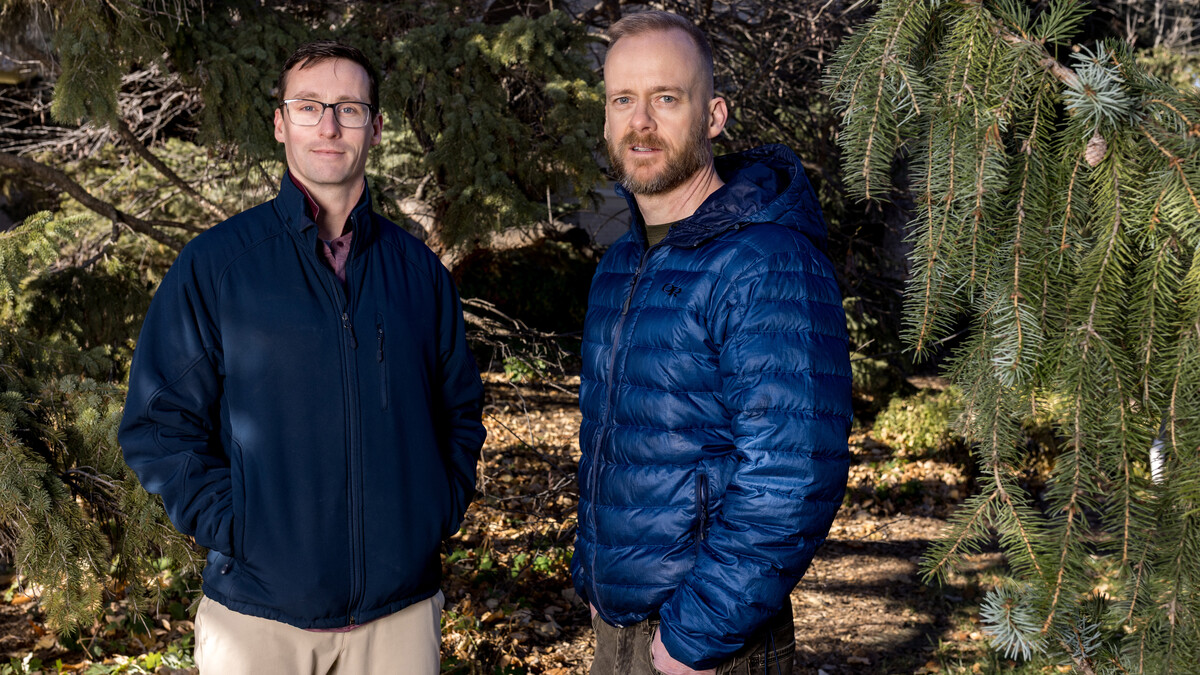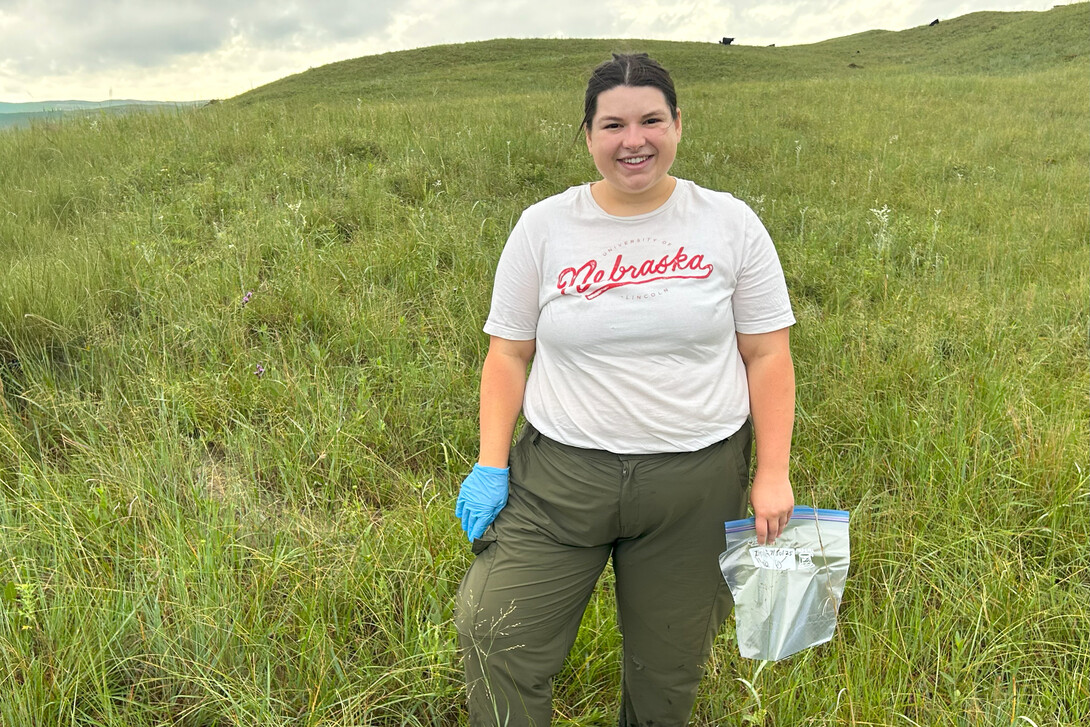
At Barta Brothers Ranch, in the northeastern Sandhills across Brown and Rock counties, Hannah Allen is working hard to determine what’s for dinner for beef cattle. She is not afraid to get her hands dirty in her master’s research, which involves collecting manure samples and examining them to see which plants the cows eat in pastures burned on a four-year rotation.
“It's a stinky business,” the second-year graduate student said, having spent summer of 2025 examining about 200 manure samples under a microscope.
The professors advising Allen, Daniel Uden and Mitch Stephenson, said they knew of similar cattle studies in patch-burn grazing systems in tall grass prairies, but Allen’s study was helping them learn more about grazing behavior and diet selection in the mixed grass prairies of the Sandhills. Like earlier studies, her research found cattle preferred grazing recently burned pastureland over unburned pastureland. Adding to that, her research indicated cattle would go against their usual preferences of grazing near water and in lowlands to graze burned land.
So, do cattle prefer Cajun cooking?
Allen explained the grazing of blackened land as more likely a cattle preference for the tender, green shoots that appear after the older plants and dead matter have been burned off. She said these fresher plants also have higher nutritional value, and cattle typically gain weight better in burned pastures.
Pastureland that has been burned and grazed typically grows back more diverse, with more flowers, and different heights and types of grass.
Allen found the cows in her study preferred switchgrass, reed canary grass, stiff sunflower, western spiderwort and fresh, young plants without dead matter. They put their hoof down at eating ragweed, Scriber’s rosette grass, white sage and leadplant.
Allen also did field surveys, estimating the portion of individual plants eaten. If cattle got a bite of something they didn’t like, it appeared they refused seconds.
“They're pretty good at being selective for what they like and what they don't like, which is kind of impressive,” Allen said. “You don't think about that with a big, 1,200-pound cow being able to select between individual plants.”
To carry out this research, Allen and two undergraduate technicians collected fresh manure samples over the summers of 2024 and 2025 from six herds, numbering 60-90 cattle each. In summer 2025, she examined the manure under a microscope to see what plants the cattle ate and sent samples to a lab for analysis.
She also collared approximately 30 cattle with GPS to track their location and grazing preferences every 10 minutes. Of the four quadrants of the pastureland, she found that cattle repeatedly grazed the new growth from the most recently burned quadrant.
“I always like to look at what they're eating, and I feel like every time I'm out there, they're grazing something that you wouldn't think that they would graze,” she said. “Like, once I saw them grazing thistle, and it was like, ‘That's kind of pokey. Why are you doing that?’”
She noted past studies on the nutritional value of flowers and said cattle may draw different nutrients from flowers than from grasses, indicating how “flower power” could impact managing grazing lands.
“Cattle diets are made up of a diversity of plants, and it's not necessarily good to have a monoculture of one grass that maybe they favor because their diets are very abundant of all these different species,” Allen said. “And they are selecting for them.”
Managing grazing land to be more diverse could benefit the local ecology as well as the cattle, she said. For one thing, grass burned in succession grows back to different heights in the quadrants, providing habitat for birds that prefer short grass and those that prefer tall grass.
Uden said Allen’s research is part of a larger project comparing different approaches to rangeland management. In that, he said they were seeing differences in cattle weight gains and differences in vegetation under different management treatments.
“Hannah’s work helps explain why we’re seeing those differences, which makes it important for both livestock production and ecosystem management,” he said.
Once Allen earns her master’s degree, she said she would like to teach in the space between agriculture and ecology. Right now, though, she still faces the challenges of finishing graduate school and piles of research, those tokens of the cows of summer, needing the closer examination of microhistology.
“It can feel overwhelming in the moment, but everything gets done in due time,” she said. “It's a big project, but nothing that I don't think I'm capable of.”
